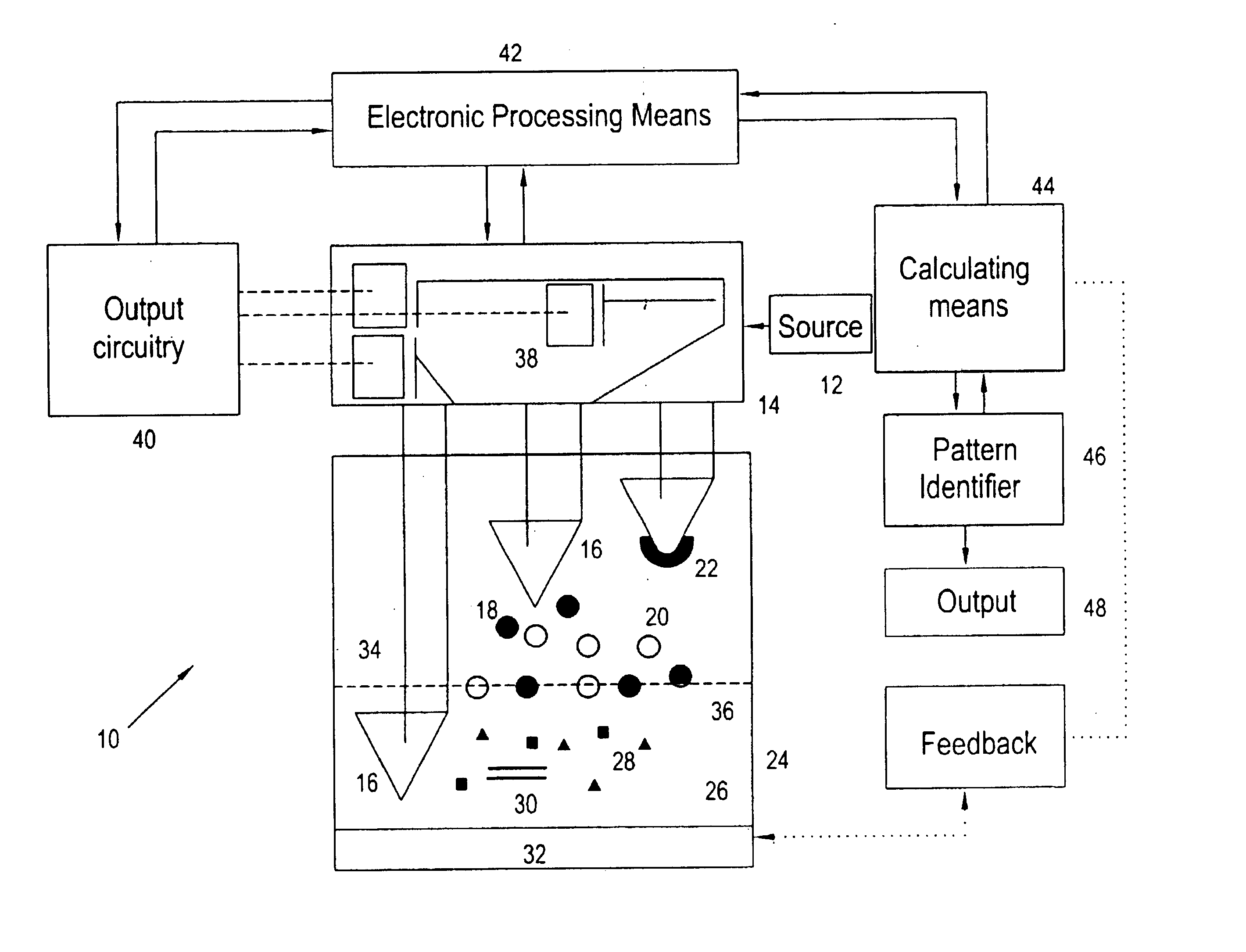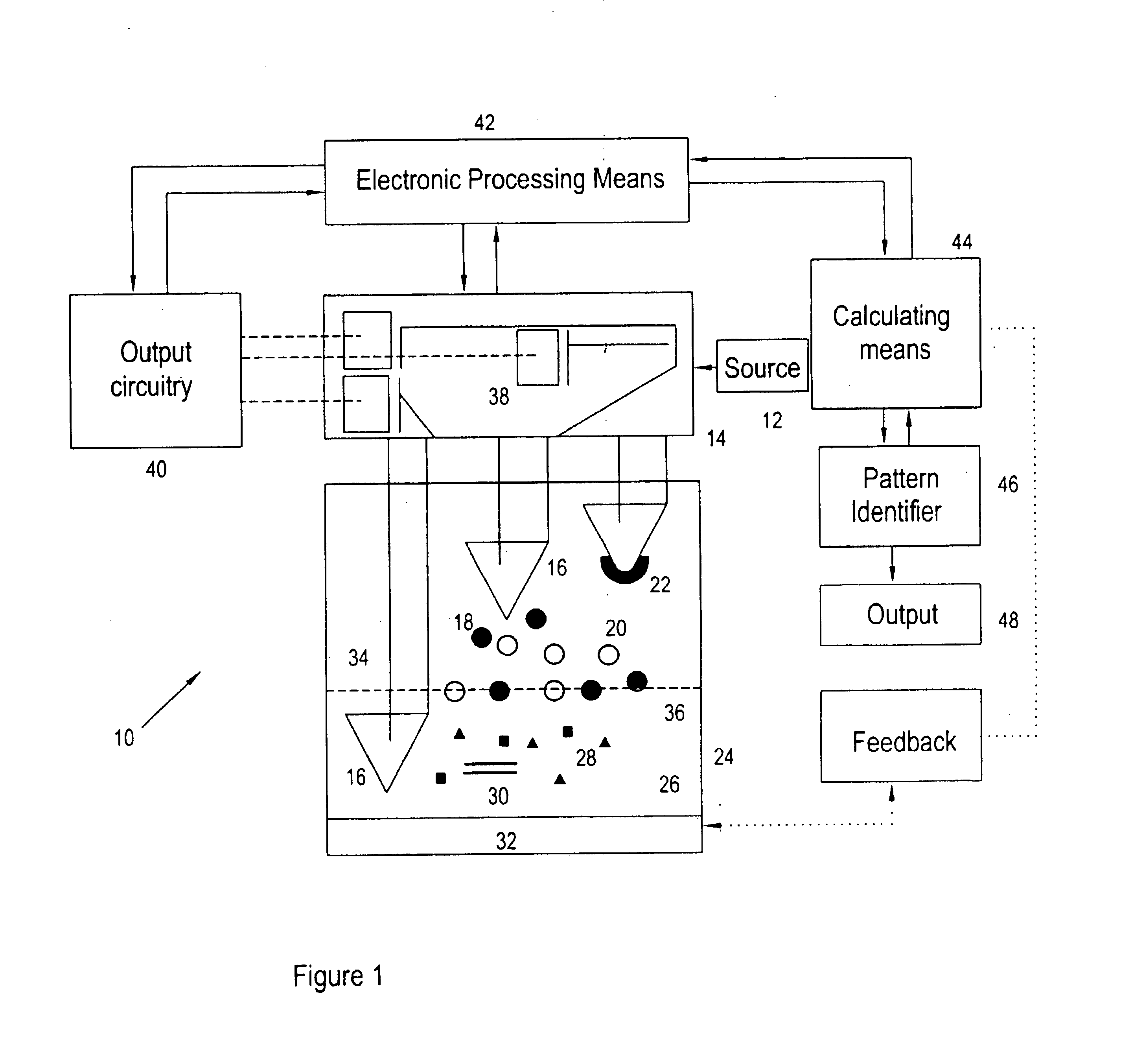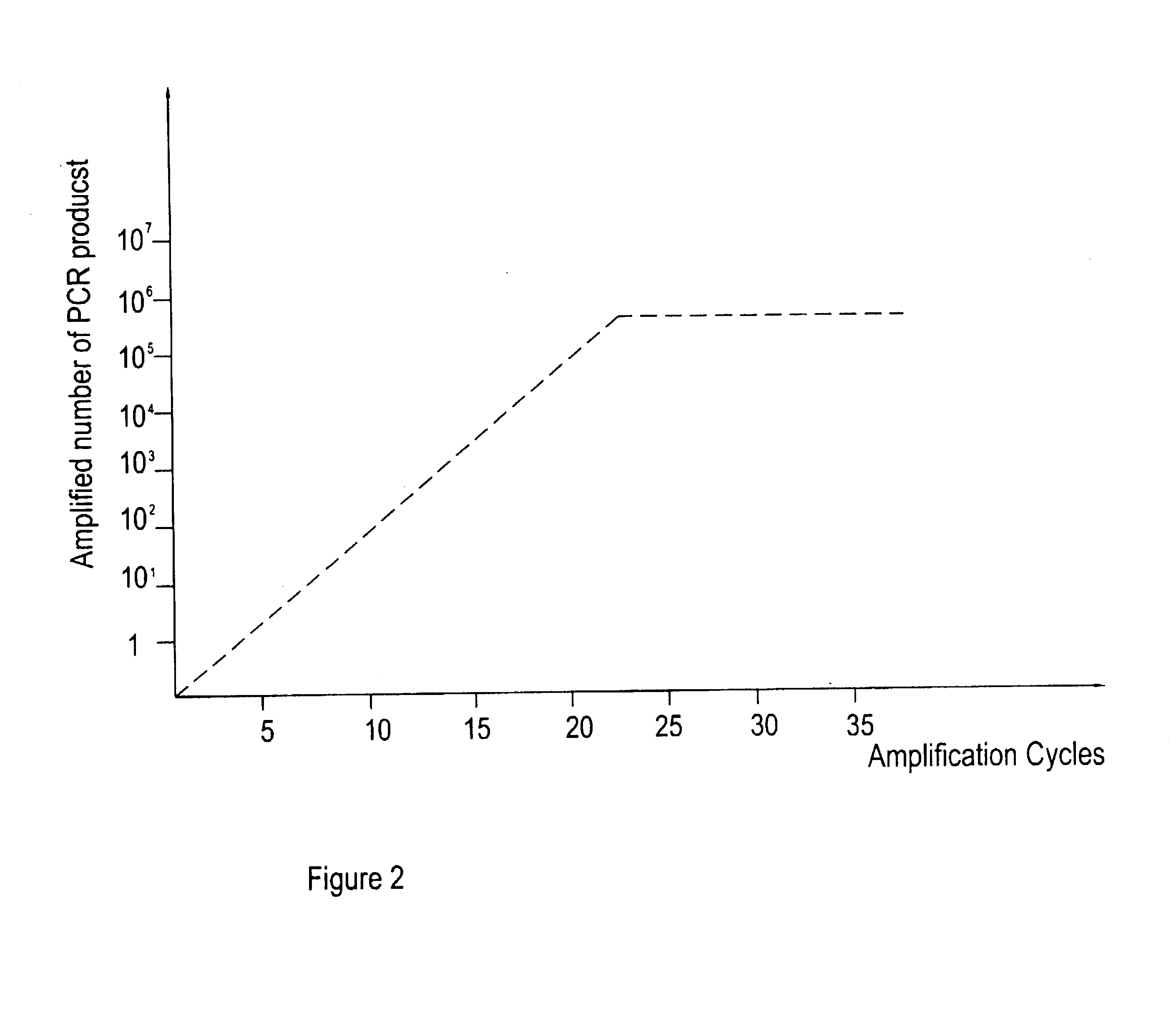Method for monitoring molecular species within a medium
a molecular species and medium technology, applied in the field of medium-sized molecular species monitoring, can solve the problems of large complex fiber optic bundles, limited reliability and reproducibility of sensor systems, and photobleaching of dye molecules
- Summary
- Abstract
- Description
- Claims
- Application Information
AI Technical Summary
Benefits of technology
Problems solved by technology
Method used
Image
Examples
example i
Analysis and Control of a PCR with a Liquid Phase MSA
[0089]The data collected in the experiments whose results are shown in the enclosed figures of the present application have been acquired using the following protocol. In the experiment, plasmid DNA are used and a primer is made to the NS1 region of a rodent parvovirus. This region is highly conserved among several different rodent viruses including: Minute Virus of Mice (MVM), Mouse Parvovirus (MPV), Kilham's. Rat Virus (KRV), Toolhan's H-1 (H-1) and Rat Parvovirus (RPV). The use of plasmid DNA also allow to quantify the number of templates which are available for polymerization. For example, growing number of cycles from 1 to 30 will produce a number of copies of template DNA from 1 to 10,000. The collection of data of the present work is performed in quadruplet for each experimental condition. One of the replicate is used as a control to be run out on an agarose gel to verify that amplification has taken place. The primers used...
example ii
Analysis and Control of a PCR with Gas Phase MSA
[0092]Plasmid DNA are used and a primer which is made to the NS-1 region of a rodent parvovirus. This region is highly conserved among several different rodent viruses including: Minute Virus of Mice (MVM), Mouse Parvovirus (MPV), Kilham's Rat Virus (KRV), Toothan's H-1 (H-1) and Rat Parvovirus (RPV). The use of plasmid DNA also allows quantification of the number of templates available for polymerization. For example, growing number of cycles from 1 to 30 will produce a number of copies of template DNA from 1 to 10,000.
[0093]Volatile organic tags chosen from chemicals such as (C2-C6) aliphatic acids, lactic acid, acetic acid, pyridine, 3-hydroxy-2-butanone, propionic acid, iso- and n-butyric acid, phenylacetaldehyde, furfuryl alcohol, isovaleric acid, α-methyl butyric acid, dimethylsulfone, n-dodecanol, n-hexadecanol, p-cresol, indole, benzaldehyde, benzoic acid, ethylene glycol, propylene glycol or any chemical derivatization procedu...
PUM
| Property | Measurement | Unit |
|---|---|---|
| Concentration | aaaaa | aaaaa |
| Electrical conductor | aaaaa | aaaaa |
| Volatility | aaaaa | aaaaa |
Abstract
Description
Claims
Application Information
 Login to View More
Login to View More - R&D
- Intellectual Property
- Life Sciences
- Materials
- Tech Scout
- Unparalleled Data Quality
- Higher Quality Content
- 60% Fewer Hallucinations
Browse by: Latest US Patents, China's latest patents, Technical Efficacy Thesaurus, Application Domain, Technology Topic, Popular Technical Reports.
© 2025 PatSnap. All rights reserved.Legal|Privacy policy|Modern Slavery Act Transparency Statement|Sitemap|About US| Contact US: help@patsnap.com



